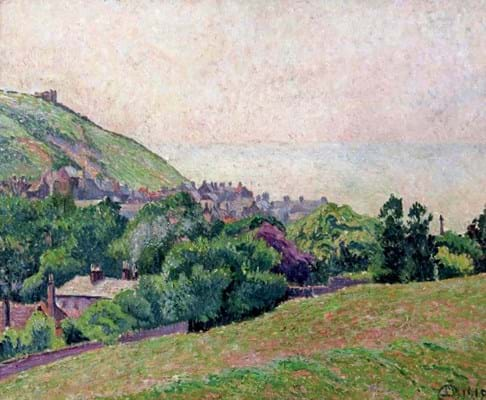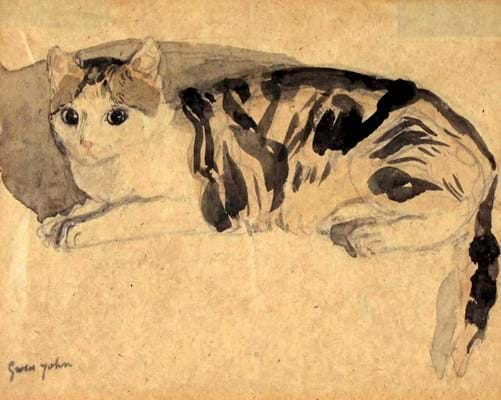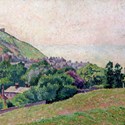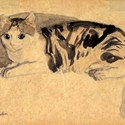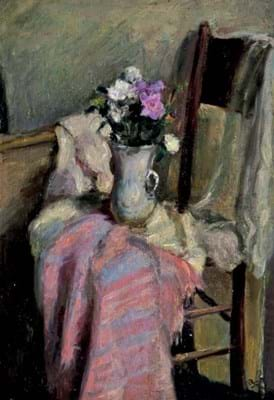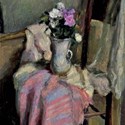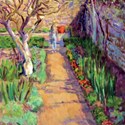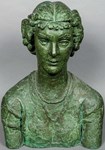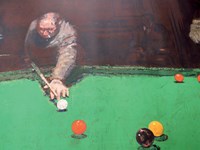Such positive stats from the June 6 auction have become the norm for the firm, which holds two Mod Brit art sales a year.
“The 20th century market is pretty healthy at the moment and most pictures are selling. Even the more representational pictures by the likes of Simon Palmer and Eric Holt are currently doing well,” said Victor Fauvelle, head of the W&W pictures department.
While the market remains robust, what has become increasingly apparent to Fauvelle over recent years is the divide between the better material and the rest.
“The market appears to be more polarised. If a picture comes from the upper tier of the artist’s output, then it will do very well. Whereas an average picture may sell but it won’t be in the same league.”
The perennial demand for market freshness is also as strong as ever: “If pictures have been seen recently on the market, people are put off by that.” A case in point at W&W was a comprehensive collection of L’école de Paris art assembled by a London-based collector, some of it as recently as 2016. Although it largely got away (helped along by some sensible pricing), there were few fireworks. As one might expect, the main bidding clashes were reserved for the fresher works in the sale.
Pissarro, son of Camile
A view of Hastings painted in 1918 by Lucien Pissarro (1863-1944), Camile Pissarro’s son, sold to the London trade for a sale-topping £34,000, against a £15,000-20,000 guide. Consigned from a deceased estate, it had not appeared on the market since it was offered at Sotheby’s in 1972.
The 17 x 21in (43 x 53cm) oil on canvas depicts the East Hill and Old Town of Hastings and belongs to a group of works Pissarro painted while touring southern England during the First World War.
As well as its market freshness, the price may have been helped along by the revival in interest of topographical views of southern English ports and harbours by the people who live there.
Consigned with the collection of L’école de Paris art was a picture by Lelia Pissarro (b.1963), another member of the talented family. The 2ft 11in x 3ft 10in (90cm x 1.16m) wintry scape, titled Maison sous la neige and dated 2004, tipped over top estimate to sell to a different London trade buyer at £6800.
Another eagerly contested work in the sale was a study of flowers in a blue vase by Matthew Smith (1879-1959).
This had come in from the same deceased estate as the Lucien Pissarro and bore an old gallery label for Alex Reid & Lefevre.
Although Smith also painted nudes and landscapes, it is his still-lifes that typically command the highest sums at auction, with this 2ft 2in x 18in (66 x 46cm) oil on canvas taken above its £15,000- 20,000 guide to £23,000 by the London trade.
Another Smith – a nude oil that had gone unsold against a rather punchy £20,000-30,000 guide in the single-owner sale of the Geoffrey Harley collection at W&W in February – got away at the second time of asking on the bottom estimate at £8000.
Familiar Mod Brits
Mod Brit stalwart Duncan Grant (1885-1978) was represented in the sale by an attractive still-life, dated 1925, depicting a finely-balanced composition of flowers in a porcelain vase on a chair. The 21 x 14½in (53 x 37cm) oil on panel was secured above the £8000-12,000 guide by a private buyer for £14,500.
Equally sought-after was a work by Grant’s companion and fellow Bloomsbury Group artist Vanessa Bell (1879-1961).
Bell’s c.1948 view of a child in the walled garden at Charleston, the farmhouse Bell and Grant famously made their own in East Sussex, was knocked down to a private buyer at £14,000, more than twice its top guide.
The 2ft x 16in (61 x 41cm) oil on paper formed part of the 14-lot collection of Mod Brit art from the property of a private London collection and was previously exhibited in 1980 at a retrospective in New York.
Another work by a female Mod Brit artist to do well at W&W was a small 5 x 6in (12 x 15cm) pencil and watercolour cat study by Gwen John (1876-1939), which sold for a double-estimate sum.
Although considered an important artist today, the Welsh-born painter was overshadowed during her lifetime by her brother Augustus John and it has taken some time for her reputation to grow.
Like Mary Fedden, John had a great love of cats and they have become something of a trademark in her work. This example, consigned from a deceased estate, was deemed a particularly skilful example and it sold for £10,000 to a private buyer.


